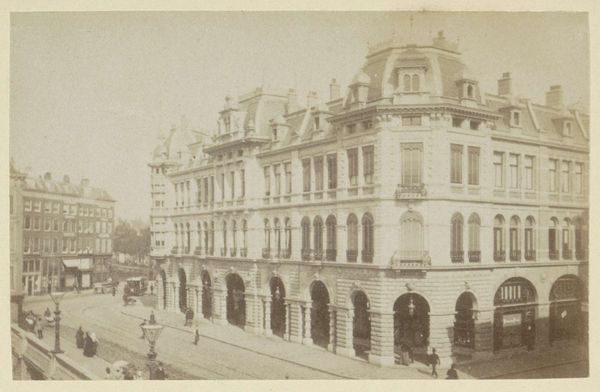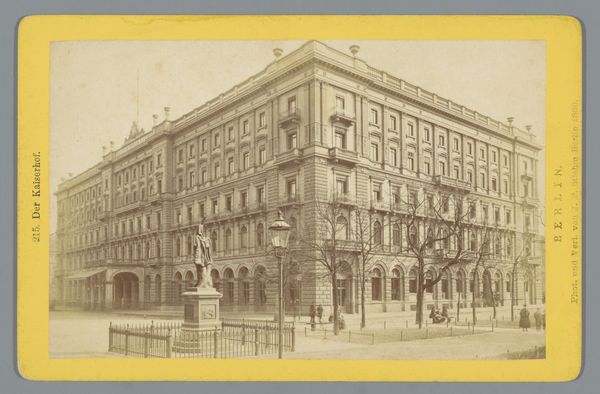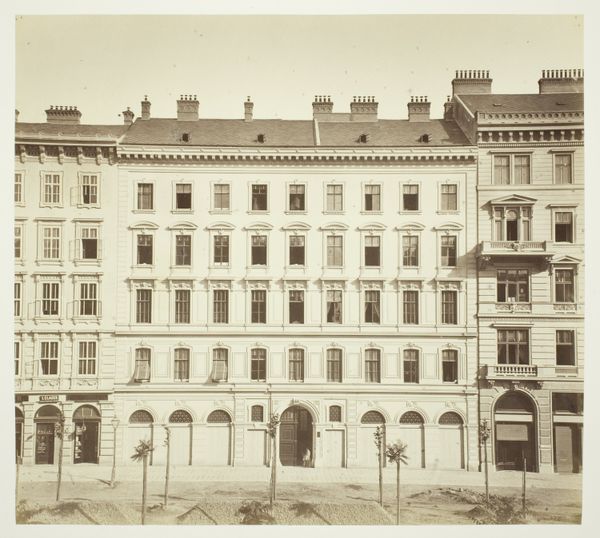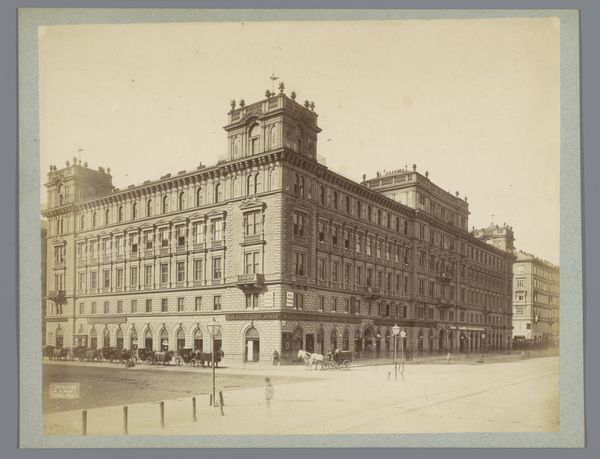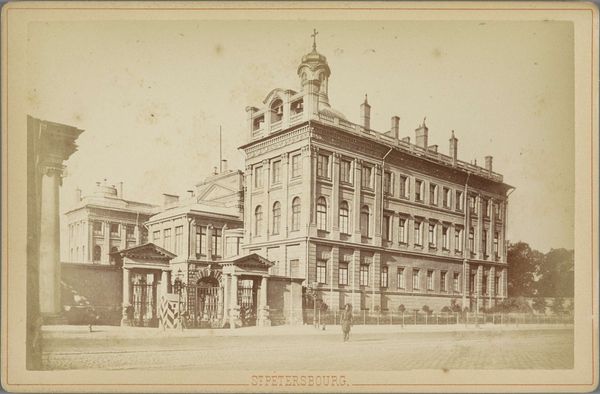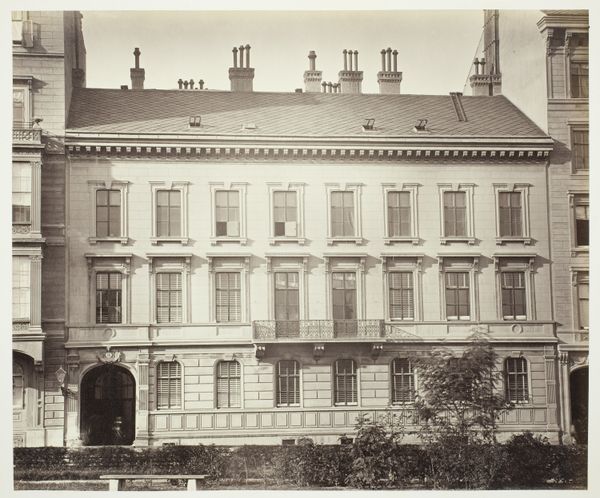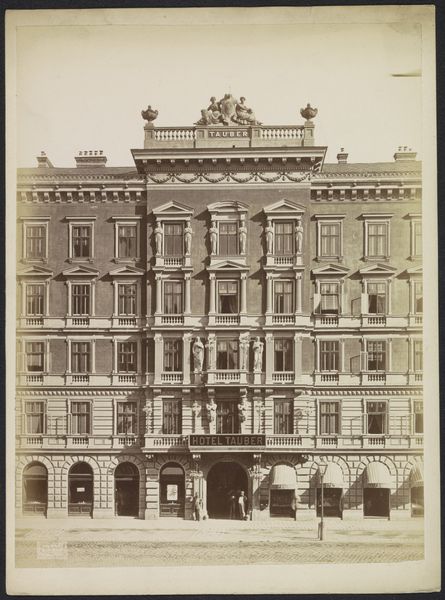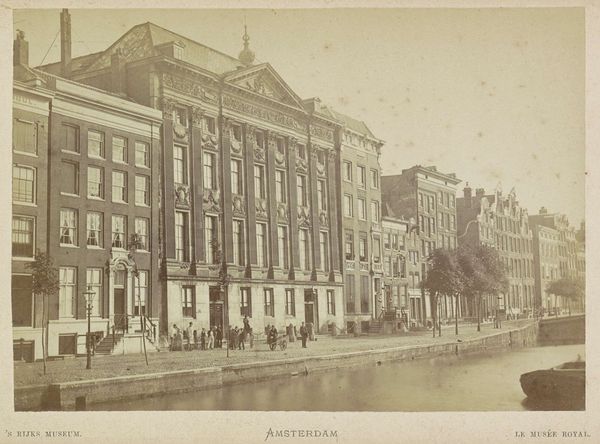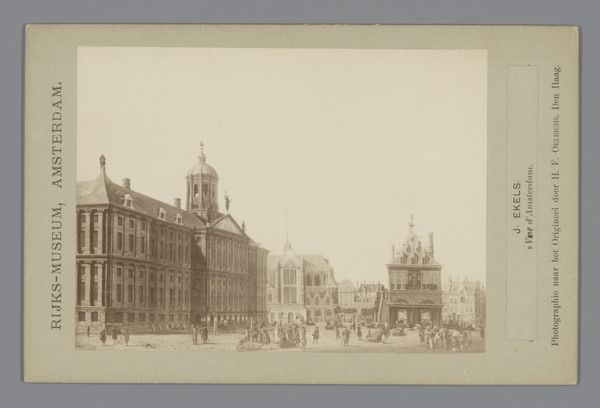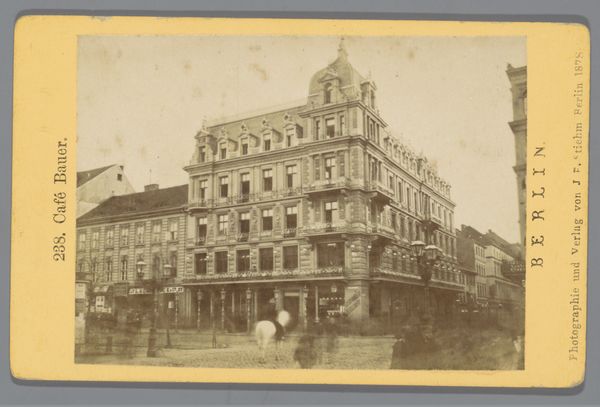
print, photography, site-specific, albumen-print
#
16_19th-century
# print
#
photography
#
site-specific
#
19th century
#
cityscape
#
albumen-print
#
realism
Dimensions: 19.1 × 23.6 cm (image); 27.5 × 38 cm (paper)
Copyright: Public Domain
Thomas Annan captured the Tontine Building in Glasgow using the wet collodion process. This photographic method, popular in the mid-19th century, involved coating a glass plate with light-sensitive chemicals. The resulting image on the glass plate is incredibly detailed. Notice how the texture of the stone facade and the cobblestone street is sharply rendered. This level of detail was crucial for documenting urban spaces during a time of rapid industrialization. Annan's choice of photography, a relatively new medium, aligned with the era's fascination with progress and technology. The wet collodion process, while complex, allowed for mass production of images. In this context, photography wasn't just about art; it was a tool for documenting and understanding the changing urban landscape. The amount of work and labour that went into the wet collodion process reflects the era’s industrial spirit, a theme that the photograph itself represents. In that sense, photography is a material witness to broader social changes, challenging traditional distinctions between fine art and social documentation.
Comments
No comments
Be the first to comment and join the conversation on the ultimate creative platform.
